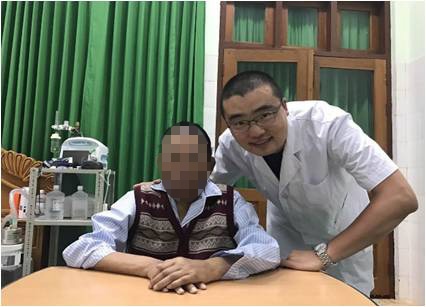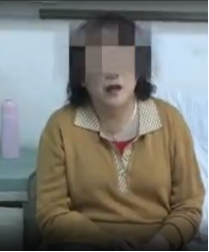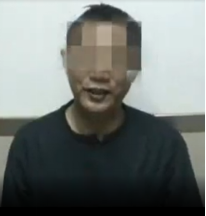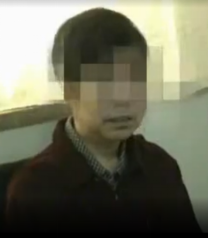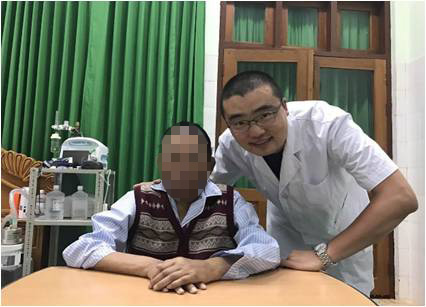
Mr. T is a prestigious entrepreneur and philanthropist in Myanmar. He gave multiple donations to build a number of temples, bridges, schools, nursing homes, and has been repeatedly reported by domestic and foreign media. However, when confronting with severe illness, he is also fragile. He was diagnosed with Motor Neuron Disease (MND, also known as ALS) in January 2014. After diagnosis, he went for treatment in the United States, Germany, Japan, Singapore, Thailand, but no significant improvement has been obtained.
Patient’s family member consulted our stem cells treatment department in January 2017. Our medical expert team went to the patient's national army hospital in March 2017 and conducted four times biological treatment as first round of treatment. After that, the patient’s symptoms improved significantly and the conditions is under controlled. The patient accepted a second round of treatment in July 2017.
Pre-Treatment Condition (Before the First Course of Treatment)
• Patient has breathing difficulty; tongue muscle atrophied and cannot be extended extraoral; speech blurred and blunt; drooling frequently and unable to swallow.
• Liquid food fed via PEG tube, solid food fed through mouth with difficulty. It takes 30 minutes for each meal, cannot drink through mouth, otherwise he could be choked easily.
• Weak muscle strength, unable to lift upper limbs, unable to hold or grab anything by each hand, unable to bend and stretch his fingers, unable to move, bend or stretch his legs, and both feet are tip-toed.
• Coldness of four limbs, severe muscle atrophy of four limbs, remarkable muscular atrophy of thenar eminence, hypothenar eminence, palmar interossei, upper limbs, scapular muscles, and leg muscles.
• Stiffness of whole body, fatigue, poor mental state, poor sleep quality.
Second Course of Stem Cell Treatment (July 2017 )
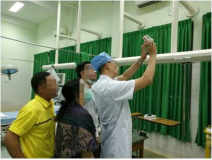
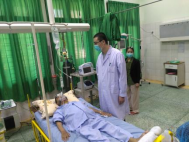
• Easier to breath, he can shortly breathe (about3 minutes) without ventilator while lying down. Tongue muscle regrowth and flattened, able to be extended extraoral and draw back his tongue freely, clear and fluent speech.
• Swallow easily, dining time shortened to 15 minutes; able to drink water easily without choking, less saliva and drooling;
• Able to lift upper limbs freely, muscle strength of wrists increased, fingers flexible, able to bend; able to bend and stretch lower limbs, feet can touch floor flatly and be flexible;
• Feel warmth of four limbs; muscles regrowth and fullness of his fingers, palmar interossei, and thenar eminence;
• Body stiffness and tightness disappeared, better sleep quality, good mental state, blood pressure and blood sugar well controlled without any medication.
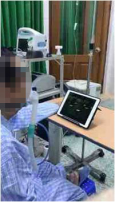
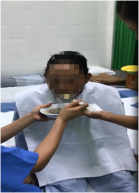

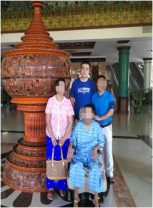
• Breathing: Overcoming a significant psychological hurdle, the patient, under the constant encouragement and meticulous guidance of the treating physician, summoned the courage to voluntarily discontinue the use of the ventilator. This act of bravery has led to a remarkable extension in independent breathing, which now lasts for a full 1.25 hours. Concurrently, the inflammation within the patient's lungs has shown a substantial reduction, indicating a positive shift in respiratory health. This improvement not only enhances the patient's physical well - being but also marks a crucial step towards full recovery in terms of respiratory function.
• Swallowing: Post-operation, a profound transformation has occurred in the patient's emotional state. The patient is now in an upbeat mood, which has directly translated into an increased appetite. Functionally, the patient has demonstrated remarkable progress in oral - motor skills. The ability to tightly close the lips during chewing is a testament to improved muscle control. When consuming food orally, the patient exhibits robust chewing capabilities, highlighting enhanced strength and coordination in the masticatory muscles. Moreover, the patient's swallowing function has improved remarkably. Drinking water orally has become a much safer activity, with a significantly reduced risk of choking, which is a major milestone in the patient's recovery journey.
• Limbs: During foot massages, a positive sign of improved neural and motor function has emerged. Whenever the feet encounter pain, the patient can instinctively and flexibly retract them, indicating a restored reflex arc. Comparing the muscle tone of the feet before and after the operation, a notable decrease is evident. This reduction in muscle tension not only eases physical discomfort but also implies better - regulated muscle activity. Post-operation, the patient has a palpable sense of physical relaxation, feeling much lighter in body. Most significantly, the muscle tone of the feet has normalized, allowing the feet to be placed flat, which is essential for normal gait and balance, and represents a significant step towards regaining full mobility.
• Peripheral Circulation: Through a comprehensive approach during the operation that combines acupoint massage and moxibustion on the abdomen, upper limbs, and lower limbs, a remarkable improvement in the patient's peripheral circulation has been achieved. Specifically, the peripheral circulation in the patient's lower limbs has shown excellent post - operative results. As a result, all four limbs have experienced a noticeable increase in warmth. This enhanced circulation is vital for the delivery of oxygen and nutrients to the extremities, promoting tissue repair and overall recovery, and also contributes to a better quality of life by alleviating discomfort associated with poor circulation.
• Overall Rehabilitation: The patient has been exemplary in following the doctor's advice, demonstrating unwavering commitment to daily rehabilitation training. This dedication has paid off in multiple ways. Mentally, the patient is in an excellent state, exuding positivity and resilience. Sleep quality, although showing only a slight improvement, is still a step in the right direction. Most importantly, the patient's self - confidence has been significantly enhanced. This new - found confidence not only aids in the physical recovery process but also empowers the patient to face the challenges of further rehabilitation with optimism and determination.
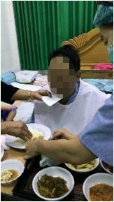
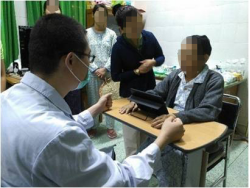
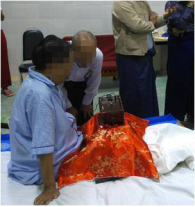

Looking ahead, the patient's current positive progress holds great promise. In the coming weeks, with continuous rehabilitation training, the respiratory function is likely to improve further, enabling even longer periods of independent breathing. The swallowing function may fully recover, allowing a more diverse diet. The limb strength will probably continue to strengthen, facilitating normal daily activities. With the enhanced self-confidence, the patient will be more motivated to embrace the recovery journey.
